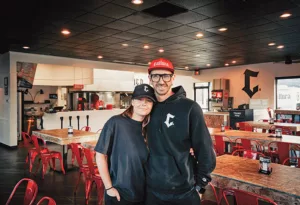
Home » Electrical Systems for Healthcare Facilities
Sponsored Content ...
Electrical Systems for Healthcare Facilities
Knowing which codes apply to which types of facilities is key for healthcare design teams

July 1, 2025
Most people don’t think too much about the essential electrical systems for healthcare facilities that keep things running smoothly until they—or a loved one—needs medical help. Yet engineers, contractors, architects, and maintenance professionals associated with healthcare are acutely aware of the myriad of HVAC, plumbing, communications, and electrical systems that must perform properly to ensure an environment where medical personnel can successfully work their healing arts. The electrical power system is just one of those vital systems.
Keeping the Power On
Utility companies go to great lengths to maintain reliable electrical systems, and in the United States, our power grid is more than 99% reliable. Still, problems do occasionally crop up. To compensate for our imperfect world, Article 517 of NFPA 70 – The National Electrical Code (NEC) – requires an Essential Electrical System (EES) to provide power to critical medical loads when normal power is lost. The EES must have two or more sources of power, which can consist of the following:
- Utility power – This is usually the primary ‘normal’ source.
- Generators – This is the most commonly used secondary “alternate” source.
- Fuel Cell Systems.
- Energy Storage Systems such as batteries.
- A Health Care Microgrid.
Whatever the alternate power source, there must be automatic transfer switches to safely and reliably transfer the power, within 10 seconds from one source to another and back.
Risk Categories
Paralleling the NFPA 99, Health Care Facilities Code, Article 517 of the NEC divides the various areas within healthcare facilities into four separate risk categories. These categories range from Category 1, where a power failure can cause significant injury or death, to Category 4, where a power failure is unlikely to hamper patient care.
Category 1 (Critical Care)
These areas are where patients receive invasive procedures and are connected to line-operated, patient care–related appliances such as:
- Critical care patient rooms
- Intensive care patient rooms
- Angiography laboratories
- Cardiac catheterization laboratories
- Delivery rooms
- Operating rooms
- Post-anesthesia care units
- Trauma rooms
Category 2 (General Care)
Spaces where electrical system failure is likely to cause minor injury to patients, staff, or visitors, such as:
- Inpatient bedrooms
- Dialysis rooms
- In-vitro fertilization rooms
- Procedural rooms
- Diagnostic imaging spaces
Category 3 (Basic Care)
Spaces where electrical system failure is not likely to cause injury to patients, staff, or visitors but can cause patient discomfort, such as:
- Examination or treatment rooms in clinics, medical and dental offices, nursing homes, and limited care facilities
Category 4 (Support)
Spaces where electrical system failure is not likely to physically impact patient care include:
- Anesthesia workrooms
- Sterile supply
- Laboratories
- Morgues
- Waiting rooms
- Utility rooms
- Lounges
EES Branches
The EES is divided into three branches based on the above mentioned categories—life safety, critical, and equipment. These three branches must be kept separate from the normal power and each other, so a healthcare facility must have additional panelboards to distribute the power. Except for very small facilities, each branch of the EES requires at least one automatic transfer switch.
- Life Safety Branch - This branch is restricted to loads responsible for keeping people alive. These consist of emergency egress lighting, exit signs, fire alarm system, and communication systems used for issuing instructions during emergency conditions.
- Critical Branch - This branch serves loads essential for patient care . These consist of task illumination, fixed equipment, and selected receptacles. Spaces that utilize anesthetizing gases, patient beds, medication preparation, pharmacy, treatment rooms, nurse call systems, telephone and data equipment, and selected power circuits needed for effective facility operation.
- Equipment Branch - This branch is used for the equipment loads required for facility operation. Equipment loads such as central suction systems, sump pumps, compressed air, HVAC equipment, kitchen hoods, and smoke control or stair pressurization.
Any healthcare facility with Category 1 spaces need a Type 1 EES consisting of all three branches (life safety, critical, and equipment). A healthcare facility with only Category 2 or lower spaces, such as nursing homes or limited care facilities, would have a Type 2 EES that only needs two branches (life safety and equipment).
However, if any area in a nursing home or limited care facility falls into Category 1, the EES must be a Type 1 system.
Related Codes and Standards
Architecture and engineering teams may discover they need more information throughout the design process. The following related codes and standards may be good sources to consult and study:
- NFPA 99 – Health Care Facilities Code
- NFPA 101 – Life Safety Code
- NFPA 110 – Standard for Emergency and Standby Power Systems
- FGI – Facility Guidelines Institute
- Guidelines for Design and Construction of Hospitals
- Guidelines for Design and Construction of Outpatient Facilities
- Guidelines for Design and Construction of Residential Health, Care, and Support Facilities
Conclusion
When your team follows these code provisions and your facility’s systems are carefully maintained, its electrical system will be reliable, even when utility power is occasionally lost. With these systems in place, physicians and nurses can confidently perform their work.
Ultimately, patients reap the benefits of modern medical science without ever having to think about or be aware of what could have made things difficult.
Link to blog on our website with some valuable charts to download: https://m-m.net/insights/electrical-systems-for-healthcare-facilities/. For information, contact Ross Balfour at [email protected] or (509) 867-7222.
About the Author
Garth Stevens specializes in electrical systems associated with buildings. He’s worked on everything from 480V down to low-voltage systems.
Sponsored Content
Related Articles
Related Products



_web.webp?t=1764835652)